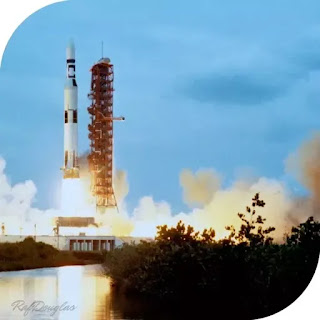You might have heard there is a physical limit to the level that a sound can reach. That is true, but only if we limit ourselves to undistorted propagation in air. What I will show you here, are the most impressive sounds witnessed by human kind.
First, let’s cover the basics quickly: sound levels are relative measurements, i.e. they compare a given sound pressure with a reference one. That reference is an internationally accepted standard, and is set at just 20 micro Pascal, an extremely feeble sound, that most of us could not hear.
Scales: Linear vs Logarithmic
Let me also introduce linear and logarithmic scales.
When you add one gram of sugar to another gram of sugar, you get two grams of sugar. One ton plus three tons equals four tons. This is a linear scale.
In physics, we often deal with values which can vary by several orders of magnitude, like the intensity of light (think of a candle at a sling’s shot distance versus the blazing light of the Sun as seen from Mercury), radio signals or, you guessed it, sound levels.
In these cases it is more convenient to express them in a so-called logarithmic scale and in terms of decibels. It is slightly against the daily use, but is based on simple math (trust me).
When we add two sound sources of 50 dB each (like a person’s speech volume), we get an equivalent sound source of about 53 dB (not 100!). Add four sources of 50 dB each, and we get 56 dB (not 200!). Add a thousand of them, we get a mere 80 dB (not 50.000!). A million and all we get is just 110 dB.
The Maximum (Undistorted) Sound Level
The maximum undistorted sound pressure level that can be transmitted through sea-level atmosphere on Earth is 194 dB.
Anything more than that, the sound wave will be “clipped” at the bottom, since vacuum-like absolute pressure would be reached (0 Pa).
Following on the example above, to reach 194 dB we would need a staggering 251.188.643.150.957 people talking. That is over 30 thousand times the current global population. Call that a global effort!
However, if we accept “distorted” sound, levels much larger than 194dB are achievable, even on Earth.
When 194 dB is reached, to transmit the exceeding energy, the ordinary pressure oscillations associated with sound are not enough, and an actual pressure wave kicks in.
Air particles are not only oscillating around an equilibrium point (like in normal noise conditions), but are violently pushed away from the source.
These moving air particles will transfer their energy to the first object they collide against.
And this, at the end, is how windows and buildings break during massive noise events.
Human Hearing and Frequency Weighting
All dB values in the present article are expressed as “unweighted” or “total”, whereas the human hearing perceives less in the low- and high-frequency domain.
This is critically also the part of the spectrum where extreme events tend to concentrate most part of their energy.
Unweighted levels are usually suffixed with a “Z” (like zero-weighting) thus presented as dB(Z).
By contrast, levels in environmental/safety measurements are presented as dB(A), because they reflect more closely the characteristics of human hearing.
OK, That’s Nice, But I Came Here for the List!
OK, agreed, you were patient enough!
Here you go: the following list accounts for the largest sound events witnessed by humankind.
5. The launch of a Saturn V rocket can produce 220 dB.
4. The infamous Tzar Bomba reached probably 224 dB (releasing one fourth of the Krakatoa explosion), and accounts for the largest human-made noise. Some sources report that this event created a 280 dB level, but I don’t think it can be a correct value.
3. The eruption of the Krakatoa volcano probably attained 230 dB on August, 27 1883. This was so powerful that the sound wave circled the globe four times. The crack was distinctively heard from over 5000 km away, more or less like from New York to Los Angeles.
2. The Tunguska meteoric event of 1908 is calculated to have reached 300 dB. This massive explosion flattened 80 million trees over an area of 2 000 square kilometres.
1. Hey! Wait… What about Number 1? I had to leave it out for a couple of paragraphs, because #1 is … otherworldly.
 |
| The impressive launch of Saturn V on May 14, 1973 from Launch Pad 39A at the Kennedy Space Center. |
 |
| The Krakatoa eruption: a depiction of that time. |
- Dotted: theoretical geometrical propagation (not real). This only accounts for the inverse square law, i.e. 6dB attenuation every distance doubling ( 20∗log(r2/r1) )
- Continuous: real propagation (dB vs distance), accounting for both inverse square law and air attenuation.
 |
| Sound waves, shown as ripples in the gaseous mass around Perseus. |
 |
| Sound waves propagation around Perseus’ super massive black hole. |



